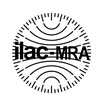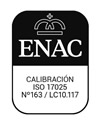The International WELL Building Institute™ (IWBI™) recently launched the WELL Performance Rating, a new form of certification that uses performance and user experience data to help improve the indoor environment of buildings for health.
You may be interested in our post: What is the Well Building Standard?
What is the WELL Performance Rating?
The WELL Performance Rating is a new rating that encourages building owners and facility managers to use performance metrics to validate and improve indoor environments and occupant health and well-being.
Its main feature is that it focuses on measurable performance strategies that are verified through on-site testing and sensor technology as well as user experience surveys, so that organisations can make smart, data-driven decisions.

Core components of the WELL Performance Score
The WELL Performance Rating includes 33 characteristics grouped into 7 categories. All projects must achieve a minimum of 21 features to achieve the WELL Performance Rating:
- Indoor air quality (9 features)
- Water quality management (4 features)
- Lighting Measurement (2 features)
- Thermal conditions (2 features)
- Acoustic Performance (5 features)
- Environmental Monitoring (6 features)
- Occupant experience (5 features)
What are the steps to follow?
- Goal setting: some strategies aligned with the objectives of the project are selected.
- Data Monitoring: Sensor technology tests and user surveys are tracked to measure progress.
- Timeline Acceleration – Milestones are reached faster with a streamlined review cycle.
- Reports and transparency: performance data, survey results, and other reports are displayed.
What is the difference with WELL certification?
WELL certification proposes to measure a series of metrics called concepts. This includes characteristics within 10 main concepts: Air, Water, Nutrition, Light, Movement, Thermal Comfort, Sound, Materials, Mind and Community.
The functions include both preconditions and optimisations. To successfully achieve the WELL standard, preconditions and weighted optimisations must be fulfilled.
The certification of a project is calculated by means of an overall WELL score covering the completion of the preconditions and optimisations of the project. The verification is done through an on-site assessment by a WELL assessor and is completed once all respective documents have been submitted and approved.
In contrast, in the WELL Performance Rating there are no achievement levels for ratings, preconditions or points, as the focus is largely on performance-based metrics, most of which require verification through sensor data and/or performance testing. Technical documents or real-time data reports are also acceptable.
The WELL Performance Rating can be achieved as a stand-alone designation or a milestone on the path to WELL Building Standard certification at different levels.
The importance of indoor air quality
Indoor air quality remains front and center for the WELL Performance Rating due to its significant impact on occupant well-being.
By investing in indoor air quality monitoring technology, projects can earn points on:
- 9 “Indoor Air Quality” Category Functions (PA1~PA9)
- 3 additional features in the “Environmental Monitoring” category to measure air parameters (PM1), install IAQ monitors (PM2), and promote air quality awareness (PM3).
This adds 12 features to the total of 33, with only 9 more needed in other categories to meet the 21-feature requirement for qualification.
Monitoring of air quality parameters
With the heavy focus on performance-based metrics, continuous monitoring plays a critical role in the WELL Performance Rating.
The indoor air quality and thermal comfort parameters that can be verified through the continuous monitoring route are:
- PM 2.5 particles
- PM10 particles
- Total Volatile Organic Compounds
- Carbon monoxide
- Ozone
- Radon
- Carbon dioxide
- Formaldehyde
- Nitrogen dioxide
- Temperature (dry bulb)
- RH
In addition, clarifications have been added to the WELL 2021 Performance Verification Guide related to:
- The location of the devices
Previously the monitors had to be installed on a wall (vertically), at a height of 1.1 to 1.7 m above the floor. With this update, the devices can also be installed on the ceiling (horizontally).
However, this placement option is only applicable in spaces with ceilings no higher than 3.7 m, that do not use displacement ventilation, and where there is evidence that the air is evenly mixed.
- Equipment density based on space
For all parameters (except for radon):
- Projects with occupancy space < 3250 m2: 1 monitor for every 325 m2 in (minimum 2)
- Projects with occupancy space of 3,250-25,000 m2: 1 monitor per 500 m2 (minimum 10)
- Projects with occupancy space > 25,000 m2: 1 monitor per 1000 m2 (minimum 50)
- Field Calibration
Air quality sensors must be recalibrated or replaced annually to ensure data accuracy. Field calibrations using a reference sensor are accepted; however, the sensors must be co-located, and the calibration period must capture a sufficient range and concentration of contaminants, either using known standard gases or exposure to ambient contamination, to accurately adjust.
How can indoor air quality monitoring help?
Monitoring devices can assist in measuring indoor air quality parameters, including PM2.5, PM10, VOCs, CO2, as well as thermal comfort parameters such as temperature and humidity, helping you to secure up to 13 points in the following WELL Performance Rating characteristics:
Indoor air quality (+7 points)
- PA1 Compliance with particle thresholds.
- PA2 Compliance with improved thresholds for particulate matter.
- PA3 Compliance with the thresholds for organic gases.
- PA4 Compliance with the improved thresholds for organic gases.
- PA5 Compliance with thresholds for inorganic gases.
- PA7 Ensure adequate ventilation.
- PA8 Increase the supply of outside air.
Thermal Conditions (+ 2 points)
- PT1 Provide an acceptable thermal environment.
- PT2 Manage relative humidity.
Environmental Monitoring (+ 4 points)
- PM1 Measurement of air parameters.
- PM2 Installation of indoor air equipment.
- PM3 Promote awareness of air quality.
- PM4 Monitoring of thermal comfort conditions.
Why the WELL Performance Rating?
Inspired by the success of the WELL Health & Safety Rating, we came up with the idea of creating another model to compare and improve the performance of buildings through strategies that can be measured with on-site tests (sensors) and user surveys.
Society is increasingly demanding more transparency in the area of health and safety in buildings.
Therefore, the WELL Performance Rating is a new form of certification that rewards building owners and managers for using measurable building and human performance metrics to gain useful information about the health and well-being of people inside and to improve the condition of spaces by making data-driven decisions.
This new designation adds to a growing body of WELL ratings.











